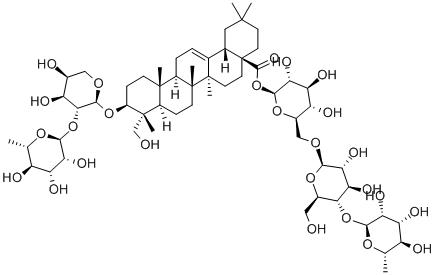the structure of the leaves
-
Last Update: 2021-01-10
-
Source: Internet
-
Author: User
Search more information of high quality chemicals, good prices and reliable suppliers, visit
www.echemi.com
mainly refers to the structure of the blades. The leaves are usually green flat and are the main part of the leaves, consisting of the skin, the flesh of the leaves and the veins of the leaves.skinusually consists of a layer of living skin cells, covering the entire surface of the blade, can be divided into the upper and lower skin. There are also polydermas made up of multiple layers of cells, such as bamboo peaches and Indian rubber trees. The skin cells are generally unfashionable in shape, and the sidewalls are often wave-like, concave and mosaiced with each other, making them tightly connected
tissues without
. The epidermic cells of general plants do not contain leafy greens, the outer wall is often thickened and keratinized, and the outer side is often covered with a continuous corneal membrane secreted by the protosome of the epidertic cells, in order to control the loss of water, prevent germ invasion and damage caused by excessive sun exposure. The thickness of the cornea varies depending on the plant species and the environment in which the plant lives. There are many pores scattered between the skin cells. The pores are made up of
2
kidney-shaped defense cells, during which the cleavage gap is the pores, which are the pores for gas exchange and water vapor between the blades and the outside environment. Generally, the upper leaf has more pores than the lower leaf, the pores in the tip and middle veins have more pores than the leaf base and the leaf edge, and the pores in the lower skin have more than the upper skin. Some plant pores also have one or more sub-guard cells that are different from normal skin cells outside the defense cells. In addition, there are various types of skins on the leaf's skin.of leafythe green thin-walled tissue located between the upper and lower skins. It is the main place where the leaf is used for photogenics, and its cells contain a large amount of leafy greens. The leaves of most plants are born horizontally on the branches, and the leaves are divided between the top and bottom. The above (near axis, abdominal) is the lighted side, dark green. The bottom (far axis, back) is the backlight side, light green. Because the two sides of the leaf are affected by light, the tissue of the leaf meat inside the two sides is often organized differentiation, this leaf is called hetero-leaf. Many single leaf plants and part of the twin leaf plant leaves, take a near-upright position to live, the leaves are evenly affected by light on both sides, so the internal leaf meat tissue is relatively uniform, no obvious tissue differentiation, such leaves called iso-faced leaves, such as corn, wheat, Hu Yang. In the hetero-leaf, near the upper skin of the leaf tissue cells are long column-shaped, arranged tightly and neatly, its long axis is often vertical with the leaf surface, fence-like, so called fence tissue, fence tissue cells, depending on plant species, usually
1
to
3
layers. Near the lower skin of the leaf meat cells contain less chlorophyl, shape is not planned, loose arrangement, cell gap is large and many, spongy, so called sponge tissue.veinsrefers to the support tube bundle or the support tube bundle and the surrounding mechanical tissue in the leaf meat. Its structure varies greatly depending on the size and weight of the leaf veins. The main vein and the large side vein
from
1 to several dimensional tube bundles. In the tube bundle, the upper (near axis surface) is the wood part, the lower (far axis surface) is the ligament part, there is also a formation layer (gem leaf plant) between the two, but the formation layer activity time is very short, so the secondary tissue produced is very small. In addition to the tube bundle, there is also a tube bundle of thin-walled tissue wrapped around it. Above and below the tube bundle, there is often a considerable amount of mechanical tissue. In small and medium-sized lateral veins, there is generally no formation layer, only the wooden part and the ligament part. The finer the leaf veins in the leaves, the simpler the structure, to the end of the leaf veins, the sieve tube of the ligament can be extremely reduced, or even completely disappeared, the wooden part is often simplified to a threaded tube cell.。
This article is an English version of an article which is originally in the Chinese language on echemi.com and is provided for information purposes only.
This website makes no representation or warranty of any kind, either expressed or implied, as to the accuracy, completeness ownership or reliability of
the article or any translations thereof. If you have any concerns or complaints relating to the article, please send an email, providing a detailed
description of the concern or complaint, to
service@echemi.com. A staff member will contact you within 5 working days. Once verified, infringing content
will be removed immediately.







